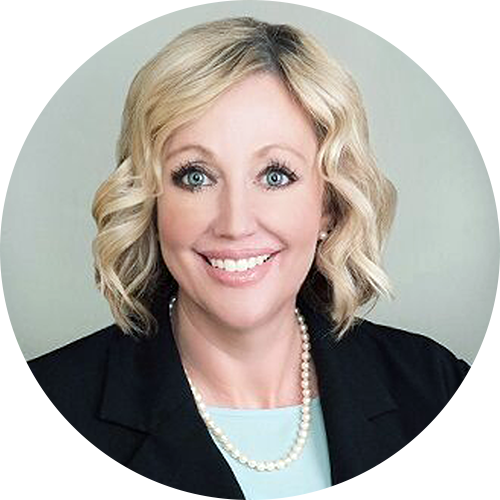Postpartum Care Resources
- POST-BIRTH Warning Signs Online Education Course
AWHONN’s Post-Birth Warning Signs online education course provides a standard approach to postpartum pre-and post-discharge education for all women, regardless of risk factors. This course is designed to educate nurses and other obstetric care providers about the maternal morbidity and mortality crisis in the U.S., particularly in the postpartum period. - Critical Care Obstetrics Education (CCOE) Hemodynamic Function & Assessment – Course 1
Understanding how the physiologic changes in pregnancy affect the noninvasive assessments of a pregnant woman is important when caring for pregnant women. This course is a foundation for the critical care courses and the information is applicable to all pregnant women whether well or critically ill. - Critical Care Obstetrics Education (CCOE) Disseminated Intravascular Coagulation – Course 2
AWHONN recommends that you take the Noninvasive Hemodynamic Function and Assessment course as a foundation for this course. - Critical Care Obstetrics Education (CCOE) Diabetic Ketoacidosis – Course 3
Pregnancy can complicate diabetes and increase the risk of DKA, which is a rare complication but a medical emergency. You need to know how the normal adaptations of pregnancy affect diabetes, events that may precipitate DKA, and how DKA is managed. -
Critical Care Obstetrics Education (CCOE) Sepsis and Septic Shock – Course 4
Sepsis is third-leading cause of maternal mortality. You need to know how to identify women with sepsis and how to implement the California Maternal Quality Care Collaborative toolkit to identify and treat women with sepsis and septic shock. - Critical Care Obstetrics Education (CCOE) Preeclampsia and Severe Hypertension – Course 5
Preeclampsia and Severe Hypertension is an online course designed to help you identify, assess, and manage pregnant women with preeclampsia and severe hypertension occurring during pregnancy and in the postpartum period. - Critical Care Obstetrics Education (CCOE) Maternal Venous Thromboembolism – Course 6
Despite improvements in maternal care, thromboembolism remains one of the leading causes of maternal death in the United States. Maternal venous thromboembolism is an online course designed to help you identify, assess, and manage women with deep vein thrombosis or pulmonary embolus in pregnancy, intrapartum, and postpartum. -
Critical Care Obstetrics Education (CCOE) Cardiac Disease and Pregnancy – Course 7
Cardiac Disease and Pregnancy is an online course designed to help you identify, assess, and manage pregnant women with cardiac disease occurring during pregnancy and in the postpartum period. - Critical Care Obstetrics Four Course Program: DIC, DKA, VTE, Cardiac
- Critical Care Obstetrics Four Course Program: Hemodynamic, Sepsis, HTN, PPH
- Perinatal Orientation and Education Program (POEP)
The Perinatal Orientation and Education Program (POEP) is highly effective in providing evidence-based, clinical education to perinatal nurses. POEP helps to mitigate patient risk, increase staff efficiency, and promote optimal obstetric outcomes while saving your healthcare system time and money. With POEP, your facility can establish consistent provision of high-quality care for mothers and infants.
- AWHONN Postpartum Risk Assessment Tool
Free Postpartum Hemorrhage (PPH) Risk Assessment Table -
Compendium of Postpartum Care, 3rd Edition Downloadable
Updated in April of 2020, The Compendium of Postpartum Care is a revised reference book that provides comprehensive, evidence-based information and guidelines for postpartum care and mother-baby nurses. - Magnet Template: POST BIRTH Warning Signs
POST-BIRTH Magnet template for hospitals. Magnet template can be downloaded, a hospital logo can be added, and magnets can be printed. Templates are available in English, Spanish, Arabic, Mandarin Chinese, and Haitian Creole. - Nursing Care of the Woman with Diabetes in Pregnancy
Nursing Care of the Woman with Diabetes in Pregnancy, AWHONN’s first evidence-based clinical practice guideline addressing diabetes, provides comprehensive recommendations for nurses who care for women with diabetes– types 1 or 2 and gestational diabetes (A1 or A2)–during pregnancy, labor and postpartum, and their babies. -
Assessment and Care of the Late Preterm Infant- 2nd Ed.
The purpose of this Guideline is to enhance knowledge of the risks of late preterm birth and the unique needs of the late preterm neonate in order to facilitate timely assessment and intervention. The clinical practice recommendations supported by rationale statements are derived from the latest scientific evidence. -
The Use of Human Milk During Parent Newborn Separation, EBG
This Guideline provides evidence-based clinical practice recommendations to support lactation for those parents who choose to provide human milk to their newborns and who are separated during the initial birth hospitalization. - Perioperative Care of the Pregnant Woman- 2nd Ed.- Electronic Download
Updated from 2011 this evidence-based guideline provides recommendations for the care of pregnant women having cesarean births and other surgical procedures based on scientific principles and empiric evidence.
- Compendium of Postpartum Care, 3rd Edition
The compendium addresses the physical, developmental, emotional, and psychosocial needs of mothers, newborns, and families from birth through the first postpartum visit.
- Nurses Leading Safe Infant Sleep Initiatives in the Hospital Setting Journal CNE
In this article, we provide an overview of sudden unexpected infant death, including sudden unexpected postnatal collapse, and the latest safe sleep recommendations from the American Academy of Pediatrics. We also offer practical guidelines for nurses—those working at the bedside and those in leadership positions—who may be seeking to improve the quality of infant sleep practices in their organizations. - Using Scorecard Feedback to Improve Quantitative Blood Loss Measurement at Birth
Objective: To increase the percentage of cases in which quantitative blood loss (QBL) was documented by labor and delivery nurses for women giving birth.






















